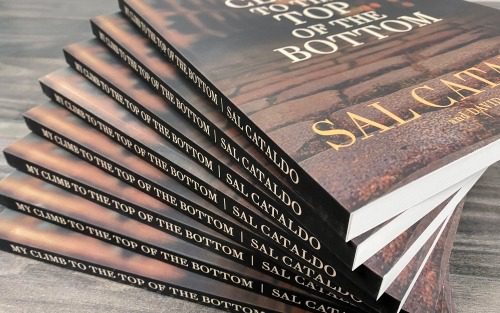Key Takeaways:
- Understanding the significance of book design in reader engagement.
- Exploring the role of print quality in preserving literary works.
- Identifying the benefits of physical books in an increasingly digital world.
The alchemy of transforming words into a tangible object creates a magical bridge between thought and material—built by the subtle yet significant craft of book printing and binding. The creation of a book is a journey that marries text with texture and color with feeling, all leading to a treasured and tactile artifact. The physical book is a beacon of permanence and sensory delight in a world of screens and ephemeral media. This deep dive into book craftsmanship affords us a greater appreciation of what it means to hold, not just read, a story.
The Aesthetics of Book Design: More Than Just a Cover
The facade of a book often serves as the reader’s first encounter with the narrative hidden within. A cover is not simply a protective layer; it is a visual prelude, an invitation into the universe crafted by the author. The nuances of book design, including typesetting, font selection, and margin sizing, extend beyond mere decoration. These critical aspects govern the readability and overall aesthetic experience, crafting a silent dialogue between the book and its reader. Through these visual and tactile elements, the story begins to breathe before a single page is turned.
Beyond setting the tone, the cover serves as a marketing tool, enticing potential readers with its captivating imagery and intriguing title. A well-designed cover can evoke emotions, spark curiosity, and convey the essence of the narrative within. Once enticed, readers delve deeper into the book’s interior, where the layout and typography further enhance their reading experience. Each detail, from the font choice to the spacing between lines, is meticulously crafted to ensure optimal readability and immersion in the narrative. Ultimately, the synergy between the cover and interior design sets the stage for a captivating journey through the book’s pages.
Print Quality: Its Impact on the Reading Experience
Imagine a reader engrossed in a tale, each page turned to heighten anticipation. Now imagine that experience disrupted by inconsistent print or poor paper quality. The distinction between high and substandard print quality is palpable — it can mean the difference between a cherished book and one that detracts from the escape of reading. High-quality print ensures that the typography is straightforward, the illustrations are vivid, and the overall product respects the integrity of the written word. This unwavering attention to detail fosters a reader’s journey through narrative landscapes without distraction.
The feel of the paper under one’s fingertips, the ink’s crispness, and the colors’ vibrancy all contribute to the immersive reading experience. When print quality is lacking, these sensory cues become sources of frustration rather than delight. Readers may find themselves distracted by smudged text, faded images, or uneven printing, detracting from their enjoyment of the story. Conversely, high-quality print elevates the reading experience, allowing readers to fully immerse themselves in the narrative without visual or tactile distractions. It’s a testament to the craftsmanship of publishers and printers who understand print quality’s profound impact on the reading journey.
Paper Choices and Sustainability
The conscientious selection of paper underscores a book’s physicality and its publishers’ commitment to environmental stewardship. Paper can be lush and laden with texture or smooth and stark, each variety altering the reader’s sensory experience. The sustainable sourcing of these materials is a testament to the industry’s evolving ethos, which seeks to honor the age-old tradition of bookmaking while mitigating its environmental impact. Through mindful choices, publishers weave a narrative of responsibility that complements the literary one contained within the book’s pages.
The Binding Techniques that Stand the Test of Time
An often overlooked yet essential component, binding is the spine that supports a story’s longevity. From the resilience offered by thread-sewn binding to the streamlined appearance and cost-effectiveness of perfect binding, this art is a silent sentinel of a book’s life. Although hidden in the book’s crease, the binding choice informs usage, wear, and even the book’s eventual place on shelves and in collections. Masterful binding techniques guard the text, ensuring its passage through time and hands.
The Personal Touch: Custom Printing Options
Custom printing options are the flourishes that commemorate books as personalized artifacts. These choices give voice to a publisher’s or author’s unique style and brand identity through customized die cuts, unusual binding materials, or signature graphic treatments. These embellishments not only serve to differentiate a book in a crowded market but also facilitate an emotional connection with the reader. A well-placed graphic, a unique cover finish, or a bespoke illustration can embody the spirit of the narrative, rendering each book a singular token of the story it unfolds.
Why Physical Books Remain Revered in a Digital Age
The tactile presence of a book—with its inviting heft and rustling pages—provides a grounding counterpoint to the digital whirlwind that marks contemporary life—holding a book anchors one in place and time, offering a retreat from the relentless pace of digital consumption. This physicality is a cherished ritual for many, a means of slowing down and engaging with a narrative on a profoundly human scale. These qualities ensure the printed book’s revered status, even as we navigate an increasingly virtual landscape.
Preservation of Literature: The Role of Quality Bookmaking
At the heart of the bookmaking craft is its role in preserving ideas, narratives, and knowledge. The meticulous attention to printing and binding enhances current readers’ experiences and safeguards texts for future generations. Through durable and thoughtful book production, literature is encased in a vessel that defies time, remaining accessible as a source of wisdom, entertainment, and historical record. The book as an object, therefore, transcends its material form to become an enduring legacy of human thought and creativity.



